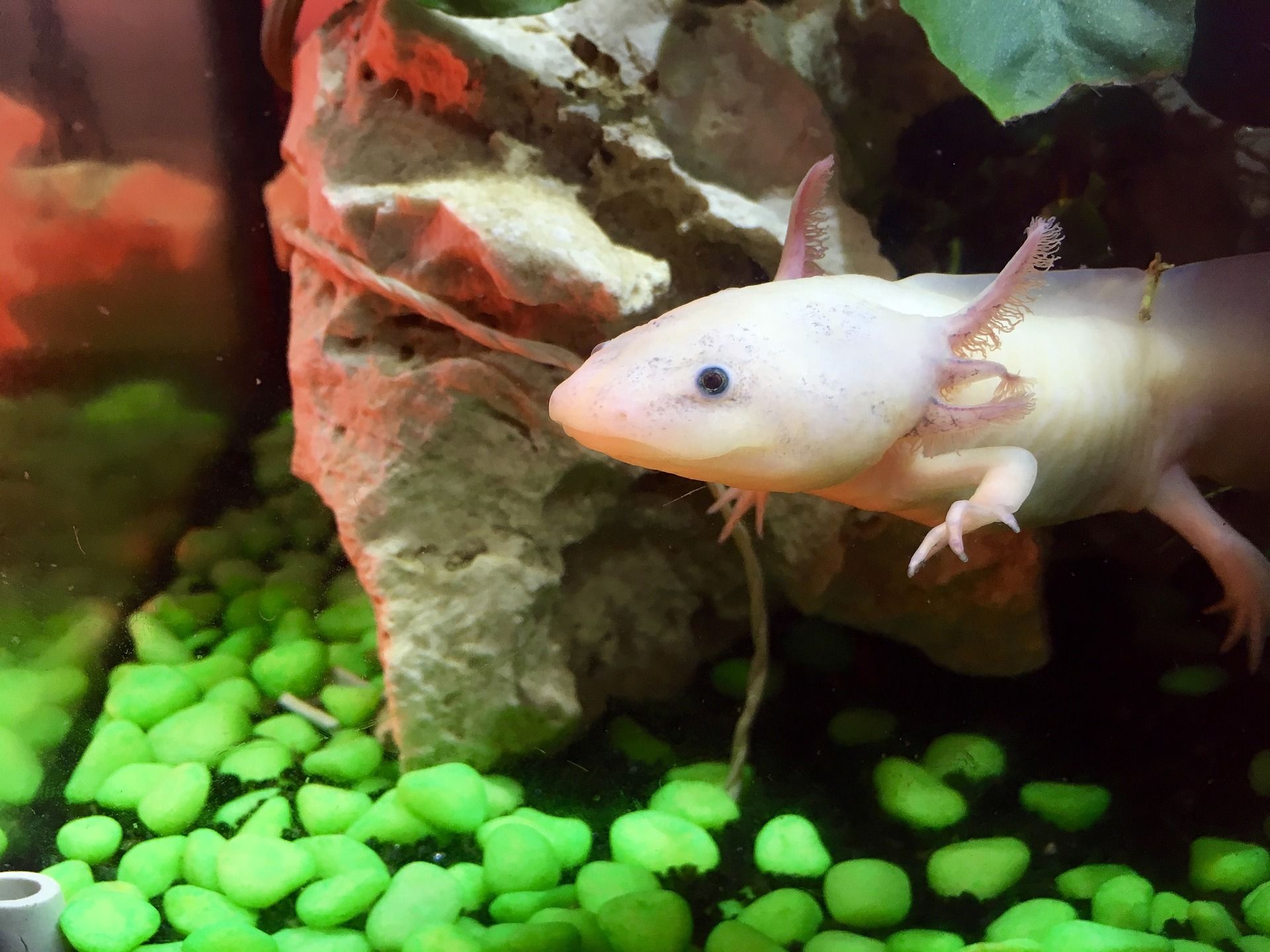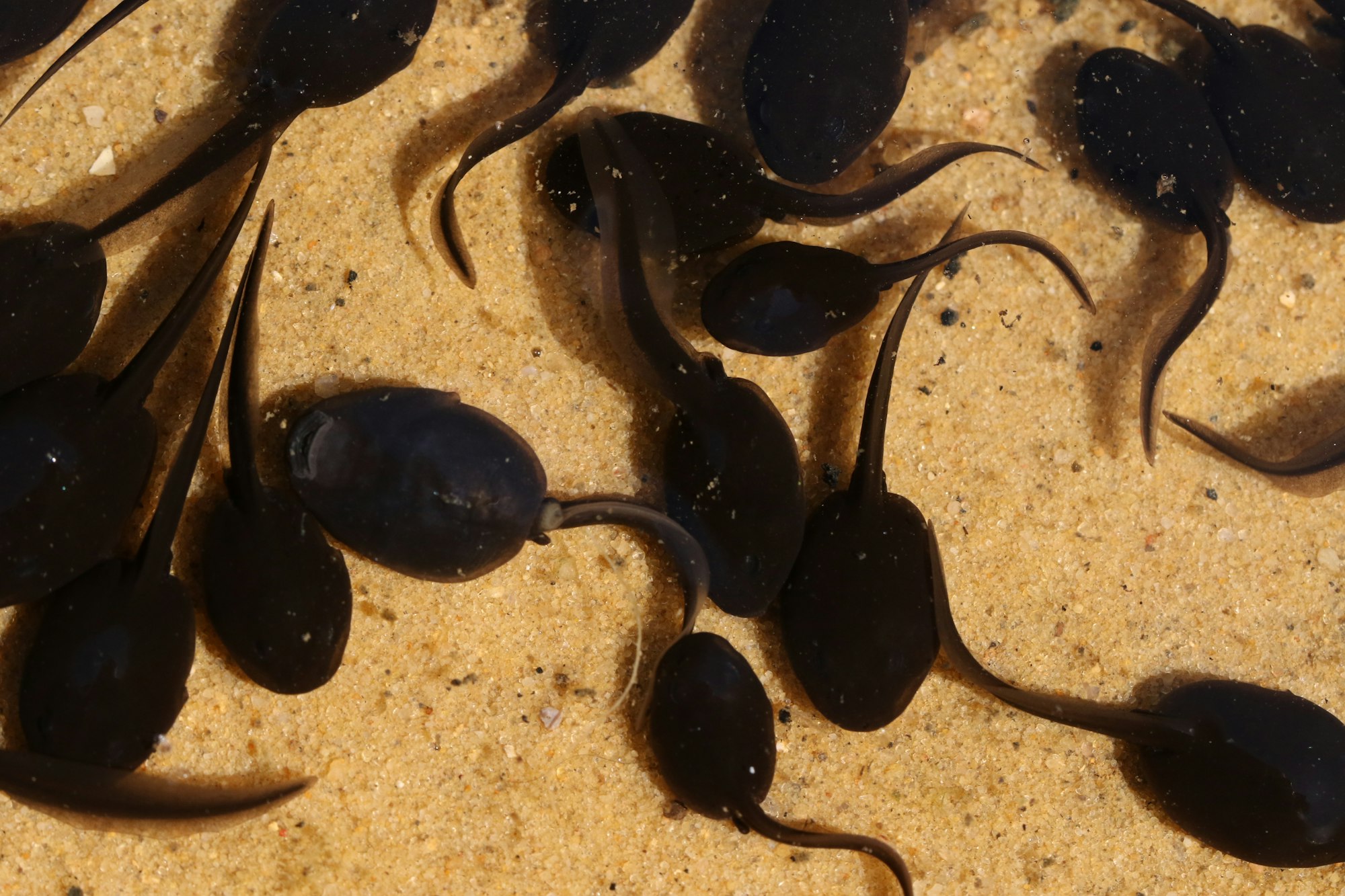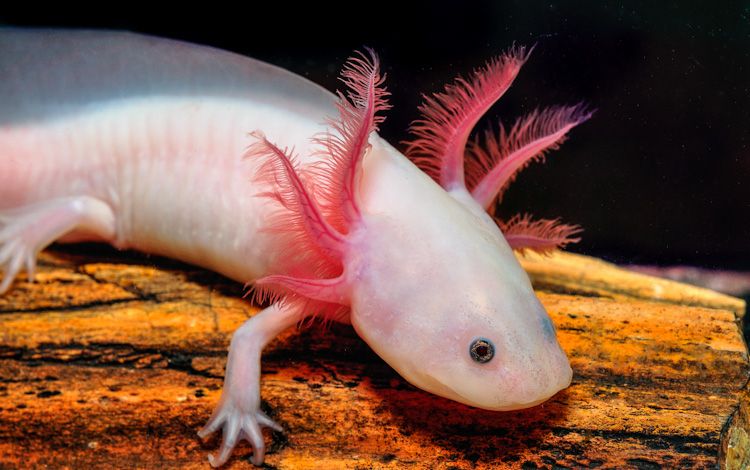Unique, Youthful And Cute - The Regenerative Axolotl

Here's a question for you. Out of all the myriad creatures in the Animal Kingdom, which would would you say are the cutest of them all? Not an incredibly scientific prospect, I know, but certainly a widely disputed one! (Truly, you'd be surprised from the furious debates that people on Reddit have about it.) If you answered with 'puppies' or 'pandas' or 'axolotls', then, suffice to say, I agree with you. If you didn't, well - then that is alright, too. In any case, I'd love to know your answer (maybe on Twitter?). And so to celebrate the existence of the diversity of animal aesthetics, here's a post about the many slimy wonders of axolotls.
Colloquially known as the 'walking fish', the axolotl (Ambystoma mexicanum) is unique among its cadre in that it does not experience the dramatic change in its appearance that many other amphibians do. Instead of losing their tails and feathery fins as frog and toad tadpoles do, or the gills that allows them to breathe underwater, axolotls simply grow with them into adulthood. Of course, their difference from frogs can be easily explained by their taxonomy; axolotls belong in the phylum Chordata (i.e. they're vertebrates), the class Amphibia and the order Urodela, which technically makes them salamanders. Nonetheless, even amongst the varied and quirky group of the salamanders, axolotls stand out from the rest. Let me explain why.
The Peter Pan Of Amphibians
To reiterate, one of the axolotl's defining characteristics is how they develop from their larval to mature stages in life. Normally, amphibians go through a period known as metamorphosis where their larvae break down and reform their own bodies to become more suited to living on dry land. For instance, a frog tadpole eventually morphs by using enzymes to catabolise the collagen proteins in its tail, thereby reabsorbing it back into its body to form legs and a specialised air-filtering gas exchange system (lungs). Scientists have been and are so tremendously fascinated by this feature that, over time, research on amphibians has won an extensive list of Nobel Prizes for researchers in this very field of study. (Look up the Nobel Laureates for Medicine or Physiology Schack August, Otto Fritz Meyerhof and Hans Spearmann. They're only a few of the ones that centred their work around frogs). Their complex morphology is a result of natural selection, with a changing environment leading species to evolve optimal ways to survive as they grow.

In the very same manner, axolotls a couple millions of years ago evolved, casting metamorphosis away in favour of a completely aquatic life cycle - simply as it increased their chances of finding food, escaping predators and living on to reproduce. In turn, this encouraged a prolonged juvenile state in growing axolotls, which is a biological phenomenon referred to as paedomorphosis. There is an explanation for this. As with most cases in multicellular organisms, salamanders' growth is dictated by hormones produced in their endocrine system. In particular, studies have shown a positive correlation between the tissue-specific alterations in a metamorphosing amphibian to an increasing concentration of a hormone known as thyroid hormone (TH), which is produced by a gland in their brain called the thyroid gland. Typically, TH secretion is regulated by a system of partnering organs and glands in the head of a salamander - the hypothalamic-pituitary-thyroid (HPT) axis - with a number of other hormones in the system interacting to control its concentration in the blood. Similar to puberty, if you may.
In axolotls, studies have shown that natural quantities of TH in their blood is too low for them to metamorphose - even though they are still capable of it. Indeed, should one inject sufficient hormonal drugs into an axolotl, they have been known to experience a similar transition to adulthood as their cousin salamanders do. I cannot recommend trying this out, however, as it would probably also cause some very unfortunate side-effects for the poor axolotl (seriously, please don't). But anyway.
A popular theory for the lack of TH secretion in axolotls states that the issue actually lies with their hypothalamus (a section of the brain) failing to produce a hormone called corticotropin releasing hormone (CRH). In amphibians, this molecule normally acts in the HPT axis to signal to pituitary gland cells to release thyroid stimulating hormone (TSH), which in turn activates TH secretion by the thyroid. Consequently, should the hypothalamus not secrete CRH, then neither TSH nor TH would be secreted either - leading to the paedomorphosis that we observe in axolotls. This raises a question, however - should the theory be correct, then why do axolotls contain CRH-secreting cells at all? Perhaps it was simply not significant enough to be influenced by natural selection - or, more likely, there is yet an important physiological function of their HPT axis that we have not found. Scientists are not sure, and so further research is required to verify the model.

Interestingly, modern humans also exhibit this trait of long-lasting youth - much more so than the humans from a thousand years ago (we are a young lot, we). Though we might take it for granted, we are curiously well-adapted at retaining a similar appearance to when we were younger as we age (I know it's unbelievable, but it's a proven fact), especially compared to other similar primates. Of course, axolotls still trump us all.
Now, then. We have seen axolotls exploit uniquely prolonged aging, appearing almost like the 'Peter Pans' of the amphibians. But there is yet another fascinating trait in their biochemistry that is only nowadays being brought into the light of the scientific community - that is, the ability to regenerate limbs.
Limb Hyper-Regeneration
As they age, it is quite normal for individual organisms to stop being able to heal wounds properly and grow new body parts. Furthermore, even though a typical organism is able to repair relatively moderate damages to their tissue, it becomes a problem when they have to regrow complex structures such as limbs; they simply aren't able to. Axolotls, however, do not give two hoots about this trend and have been found to retain incredible regenerative capacities throughout their lives. Cut off an axolotl's tail, or a leg or two, or perhaps even its heart? No problem! Within a week they will have grown it back - as a number of rather zealous (and honestly kind of cruel) researchers have observed in their labs.
Combine that with their average lifespan of around 20 years, and the axolotl becomes a great research subject for trying to investigate how to prolong the human healthspan. Accordingly, scientists have discovered a number of characteristics that contribute to their outstanding longevity and regeneration, such as:
- The retention of egg cell quality even as female axolotls mature, thereby nulling them from the potential errors associated with maturing human gametes (though axolotls are still found to become progressively more infertile as they age beyond sexual maturity);
- Continued and indefinite growth in axolotls, even in older individuals;
- Dedifferentiation of specialised cells into stem cells, thereby used to reconstruct any massive damage to their limbs
The last of these has received a particularly large amount of attention from researchers, and with good reason. In nature, cells do not really tend to dedifferentiate (which is when they revert back to a more basic, all-purpose type of cell); most of the time, they do the opposite and differentiate. So it is quite interesting to see these frilly little friends of ours display such features naturally. As an example, let's walk through the stages in which an axolotl regrows a cleanly cut-off leg.
Within a few hours (depending on the size of the damage), the epithelial cells surrounding the wound divide rapidly and migrate to cover the area of injury. Once this is done, nearby nervous fibres innervate the epithelium to produce a specialised signalling location referred to as the apical epithelial cap. A feedback loop between neurons and the apical epithelial cap then results in the local generation of a variety of signalling molecules that induce the dedifferentiation of cells underlying the epithelium, turning them into limb progenitor stem cells known as blastema cells. Finally, other molecular signals make these cells proliferate in a desired and organised direction until, with time, the axolotl has obtained a brand new leg.
Though certainly simplified, the above description should give you a picture of the adaptive process that axoltls have developed for limb hyper-regeneration. Not only is it practical and unique, it is also remarkably elegant for their size. Truly, axolotls are impressive. Unfortunately, of course, there is always a dark side to things like this - axolotls, being as captivating as they are, are being led to extinction.
Our Impact On Their Survival
Living most of their lives in high-altitude freshwater, axolotls are native to the Xochimilco lakes near Mexico City and are unfortunately seen as a delicacy by the people there. Over time, invasive species that compete with and predate on axolotls have also been articifially introduced into their habitats, with air and water pollution decreasing their viability there. It should therefore be no surprise that axolotl populations have been decreasing over the years and are now considered a globally endangered species. To put this into perspective, in the year 1998, it was estimated that the number of axolotls living in Xochimilco at the time was about 6,000 per square kilometre. Nowadays, that figure has dropped to about 35 per square kilometre.
This loss is not only significant to humanity, it is also a problem for scientists. With their diminishing numbers and increased inbreeding in captive populations, they are becoming less genetically diverse - and with that, we are losing out on numerous possibilities of regeneration-coding genes. We are losing science. Fortunately, there are still a couple of volunteer groups like the CIBAC trying to prevent their extinction, but will they succeed? I hope so. It would be an awful shame to say goodbye to such a wonderful creature.

References
- Crowner, A. et al (2019). Rediscovering the Axolotl as a Model for Thyroid Hormone Dependent Development. Frontiers in Endocrinology 12. Retrieved from https://doi.org/10.3389/fendo.2019.00237
- Vieira, W. A. & Wells, K. M. & McCusker, C. D. (2020). Advancements to the Axolotl Model for Regeneration and Aging. Gerontology 66(3):212-222. Retrieved from https://doi.org/10.1159/000504294
- Haas, B. J. & Whited, J. L. (2017). Advances in Decoding Axolotl Limb Regeneration. Trends Genet 33(8):553-565. Retrieved from https://doi.org/ 10.1016/j.tig.2017.05.006
- Makanae, A. & Tajika, Y. & Nishimura, K. et al (2020). Neural regulation in tooth regeneration of Ambystoma mexicanum. Scientific Reports 10(9323). https://doi.org/10.1038/s41598-020-66142-2
- Vance, E. (2017). Biology’s beloved amphibian — the axolotl — is racing towards extinction. Nature 551:286-289. Retrieved from https://www.nature.com/articles/d41586-017-05921-w
